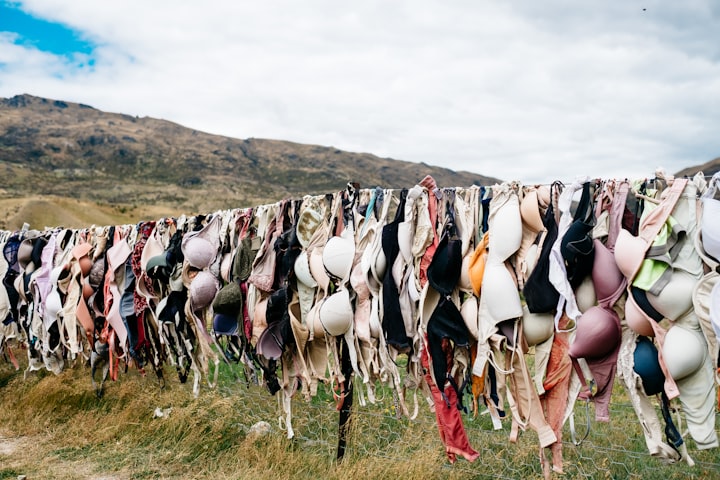Breast augmentation history and breast implants safety
Breast augmentation without implants

Breast augmentation with paraffin injections
A report published in 1903 about the use of soft and hard paraffin injections into the breast indicated the initial results from paraffin injections were in the majority of cases, pleasing. Five to ten years after issues associated with paraffin injections began to become apparent. In 1911 a textbook, Plastic and Cosmetic Surgery by Kolle, warned about the serious complications of paraffin injections into breast tissue.
Common complications included the migration of the paraffin, ulceration, fistulae, infection, and necrosis which often resulted in bilateral mastectomies. Fatalities were also recorded due to complications including, liver problems, respiratory distress, pulmonary embolism, and coma. In 1912 a report confirmed that complications could occur years after an initial satisfactory result. The report, regarding a patient that had received paraffin injections in 1904, outlined the complications she was now experiencing which needed surgical intervention, including draining a fistula. In the early 1920's research into delayed, chronic, inflammatory granulomas reactions that required surgical intervention resulted in a new term 'paraffinomas' and were often categorised by plastic surgeons as “cases of individual susceptibility”.
In 1914 the practice of paraffin injections in the west decreased, with many practitioners refusing to provide the procedure due to the high number of complications that had been recorded. In 1926 a textbook by H Lyons Hunt called it an “inexcusable practice” and the procedure was considered by western medicine to be unsafe. However, in the Far East unscrupulous, unlicensed practitioners continued to perform paraffin injections into the 1950s and early1960s. They were unconcerned about long term complications and more than happy to profit from uneducated women, who were initially happy with the result. Recorded cases of continued complications 40 years after paraffin injections include bilateral mastectomies, continued areas of induration, ulcers, and fistulae.
Breast augmentation with alternative substances
Experimental ways to enhance breast size between 1915 TO 1940 used numerous materials including 'implants' made from ivory or glass balls, synthetic sponges, silk fabric, Teflon, and rubber. Injectable substances used included, vegetable oils, mineral oil, lanolin, beeswax, soybean, and peanut oil, and even shellac, epoxy resin, ground rubber, and glazier’s putty. None of these substances proved safe and they all caused a combination of complications, including chronic inflammation with granulomas, severe tissue reactions, infections, necrosis, and many women needed bilateral mastectomy.
Breast augmentation with industrial silicone injections
In the 1940s and 1950s, the next popular solution for breast enhancement was liquid silicone injections. This method was promoted as a safe, simple, and cheap way to enhance breast size, instantly. When women had the initial injections with liquid silicone, the results for many were very pleasing. However, the few, lucky women that didn't get an infection, within a short period of time, would find the liquid silicone would eventually migrate and cause granulomas, ulceration, fistulae, and deformities. Despite the risks which also included death, with no other viable alternatives, women continued to have silicone injections out of desperation to increase their bust size.
Breast augmentation with alloplastic materials
In the 1950s and 1960s, new alloplastic materials were experimented with, including polyurethane, polytetrafluoroethylene (Teflon), and other synthetic materials. All of these materials caused serious issues including infections, local tissue reactions, lumps and deformities, hardening of the materials after implantation, pain and resulted in many women ultimately needing a bilateral mastectomy.
Breast augmentation with medical-grade silicone injections
In 1960, medical-grade silicone, known as ‘Dow Corning 200’ was developed by Dow Corning. This product was not approved for cosmetic use and was developed as a skin treatment, primarily for burn victims. However unscrupulous practitioners injected it in large quantities to enhance breast size in naive women, who believed it was safe, as it was a medical product. Within 5 years women began to report complications similar to those previously reported with industrial silicone injections, including infection, granulomas, ulceration, fistulae, deformities, and many women often required a bilateral mastectomy.
In 1966, medical-grade, silicone injections were designated as a ‘new drug' by the Food and Drug Administration (FDA). One dermatologist and nine plastic surgeons were permitted by the FDA to investigate Dow Corning’s highly purified medical-grade liquid silicone known as (Dow Corning 360) for treatment of specific facial deformities, that could not be treated with any other method. However, due to misuse, Dow Corning discontinued efforts to gain FDA approval. Serious complications continued to be reported by women who had received Dow Corning 360 injections. The popularity of silicone injections continued, in particular in Las Vegas among adult entertainers and in 1975 the state of Nevada made it a felony to inject or even transport liquid silicone into the state.
Breast augmentation with Polycyclic Aromatic Hydrocarbons (PAH)
A new substance PAH was developed in Ukraine in the late 1980s which has been used for breast augmentation for the past 20 years in Ukraine, Russia, and China. In 1997, it was approved by the (SFDA) State Drug Administration in China (the Chinese equivalent of the FDA). Reports of complications were soon reported and included major recurrent infections, granulomas, ulceration, fistulae, and disfigurement. Complications continued to be reported years after initial PAH injections and in 2009 the (SFDA) banned the production, sale, and use of PAH.
Breast augmentation with breast implants
In 1962 Thomas Cronin and Frank Gerow invented the first silicone-filled breast implant. They were manufactured by Dow Corning and consisted of a silicone shell and filled with medical-grade, liquid silicone. Within a short period of time breast augmentation with breast implants, became the most popular plastic surgery procedure for women. Complications began to be reported shortly after and included, infections, chronic pain, and granulomas. Following several successful lawsuits, in April 1992 the FDA restricted the use of silicone-filled, breast implants for reconstructive or secondary breast augmentation. This did not apply to Europe and many other countries that continued to allow the use of silicone-filled, breast implants for all types of breast augmentation procedures.
In the USA due to the concerns about the safety of silicone, saline-filled, breast implants were hailed as the new safe alternative. However women also quickly started to report complications after having saline-filled, breast implants including chronic pain, fatigue, and muscle pain. Research into these symptoms has been carried out by numerous bodies and no definitive link has been found between the symptoms and saline or silicone-filled breast implants. In 2006 the FDA lifted the restrictions to allow silicone-filled breast implants for primary, aesthetic breast augmentation procedures due to the lack of evidence that linked silicone-filled, breast implants to symptoms which have now been labeled breast implant illness (BII).
However many women did not want to have silicone-filled, breast implants, and did not like the aesthetic look or feel of saline-filled, breast implants. This resulted in alternative filler substances, Trilucent soya, and Hydrogel, being licensed for use in breast implants, in the UK and Europe.
In March 1999 Trilucent soya filled breast implants, were withdrawn from the UK market due to concerns about the long-term safety, particularly concerning the breakdown of the filler material.
In December 2000, Hydrogel filled breast implants, were withdrawn from the UK market, due to concerns about inadequacies in the biological safety assessments. and concluded that there was not enough information to fully assess either of the filler materials.
In March 2010, Poly Implant Prothese (PIP) breast implants, made in France, were withdrawn after it was revealed had been filled with industrial-grade, silicone instead of medical-grade silicone. Thousands of women in the UK and Europe, including women who had received PIP implants from the NHS were at risk. Although this was not an issue about the safety of medical-grade, silicone-filled, breast implants; it did raise a lot of concern about how a company manufacturing medical products was able to commit fraud at this level for so many years, without it being found out.
In 2019 Allergan withdraw from the worldwide market all textured breast implants due to a link to Breast implant-associated anaplastic large cell lymphoma (BIA-ALCL) a rare type of T-cell lymphoma (cancer of the immune system). This was the first time a definitive link had been made between cancer and breast implants.
Safety and breast implants
Excluding the withdrawal of Allergan textured breast implants due to a link to BIA-ALCL, both saline and silicone-filled breast implants have excellent safety records. Numerous research has been done to investigate the symptoms of BII over the past 30 years and there has not been enough evidence to prove a definitive link between symptoms of BII and breast implants.
My personal view of breast implant safety
I strongly feel that the positive psychological impact of breast augmentation surgery far outweighs any associated risks. My confidence and overall outlook have improved dramatically since having my first breast augmentation. My physical health has also improved and I eat better and exercise more, as I am now happy with the body I am in.
I have had 3 breast augmentations to achieve the size and shape I wanted, and I have had breast implants for over 15 years. After extensive research, I do not feel there is enough conclusive evidence to support BII. My current breast implants are Allergan 410 highly textured breast implants. After extensive research into BIA-ALC, I have decided that the risks of revision surgery far outweigh the risk of developing BIA-ALCL and have decided not to exchange my breast implants.
For more information about BIA-ALCL
Comment
About the Creator
Annabelle Baugh
I enjoy researching and writing original content and have created numerous articles, broadcast scripts, and blog posts, for a range of clients, including legal, healthcare, and medical companies.






Comments
There are no comments for this story
Be the first to respond and start the conversation.